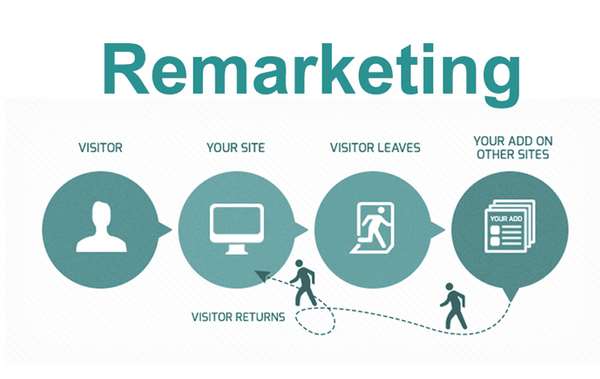For the success of any organization, it is necessary to have a constant flow of new prospects and leads. However, it takes effort, time, and investment on the part of any B2B company if they want to attract the right kind of leads. Converting your leads to clients has become increasingly difficult in today’s highly competitive business environment.
Businesses, especially in the B2B sector are trying harder than ever to generate and acquire leads. While there are several ways to generate leads organically, there is no guarantee of producing sustainable results. This is why lead generation for B2B is a process that makes use of a variety of tactics, platforms, and techniques.
Broadly, b2b lead generation is classified into two categories – Long-Term Lead Generation & Short Term Lead Generation.
Short term B2B Lead Generation
As a B2B marketer, you might be deploying and executing strategies right now with the aim of generating leads a few quarters into the future. However, it is necessary to also consider the short-term. Be it an end-of-season slump, an unexplained dip in sales or a campaign that’s faring poorly; as a marketer, you must also focus on activities that will increase business revenue in the short term.
Short-term B2B lead generation is defined as all those activities that have a shelf life and a particular end date. Testing and experimenting with various channels, strategies, and tactics may be possible for long-term marketing goals. However, it is nearly impossible to have the same approach when it comes to boosting revenue in the short term. In such a scenario, it is necessary to bank on proven strategies that will put you in touch with prospects that are highly likely to do business with your organization in the near future. An integrated B2B digital marketing strategy is the way to go. Instead of focusing on starting the purchase cycle from the beginning, this strategy aims at targeting prospects that are already at the researching phase of buyer decision making.
Some of the most widely used methods to generate short-term B2B leads include
Segmented Keyword Analysis
Segmented Keyword Analysis is one of the most critical assets in your arsenal when it comes to short-term B2B lead generation. It helps your business zero down on specific audiences with ease. One of the key benefits of this is that your business can likely grab the attention of mid-cycle prospects. This happens when you use high-value keywords and phrases through organic, as well as paid search. Not just increased prospect attention, but employing Segmented Keyword Analysis also helps. These help you construct more focused landing pages and media campaigns.
A great place to start is by reviewing your website in its entirety. Using tools like Google Trends and Google Keyword Planner will help you understand what your prospects want. Furthermore, by analyzing the search volume of keywords aligned with what your B2B business offers, you get insights. Once you have done this, browse through your website. Read through the product pages and service offerings. You’ll eventually notice that there may be areas where keywords are missing or incorrectly placed. Using the insights you gained from these tools, create content and keyword-rich pages on your website. The goal of this exercise is to create content that offers value to prospects that are in the right mindset to purchase in the short term. Moreover, by conducting research in this manner, you’ll be better equipped for other campaigns and communication programs for long-term lead generation.
Optimized Landing Pages
Once you’ve got your keyword analysis down pat, the next place to focus your attention is on landing pages. In a scenario where you’ve got too many prospects and not enough leads, optimized landing pages may help you change the game. Working hand in hand with segmented keyword analysis, your landing pages become relevant to your audience once optimized.
The important element of a well-optimized landing page is the call to action. Since placement and visibility are important, make sure to use at minimum one clear, actionable call to action above the fold. Two to three other calls to action can go throughout the remainder of the landing page. A more significant number of CTAs give your website visitor or prospect more chances to convert into a buyer. Add any trust signals your brand may have. These trust signals include industry group badges, member badges, customer testimonials, brand ambassadors, and any other certification or qualification that enforces your B2B organization’s industry standing.
Points To Remember
Make sure that the customer who uses your website has an easy experience. Be it purchasing a product, filling up a form, signing up for a new service, or any other activity; make sure it is easy to access your website. Apart from this, it is necessary that the landing pages are aesthetically pleasing and are well-designed. Make sure to use fonts, colors, and design elements that are most likely to appeal to your site visitor. As a rule of thumb, try an experimental approach with your landing pages to see what works best. Right from color schemes and the content to font sizes and static-dynamic activity, you won’t know what your customer responds to best unless you’ve tried it.
Remarketing
Crafting Your Remarketing List
Google Analytics is an asset when it comes to segmentation as it helps you analyze lead or customer behavior. Be it the time they spend on devices, or the time spent on your website, you can track it all. By evaluating the recentness of the last visit, you can create pages with the appropriate messaging and marketing communication. You can tailor ads for each segment to redirect them to landing pages that are most suited to their interest. This means that if a prospect is most likely to respond to reviews, the ad they see will redirect them to a page where they can read customer reviews. The ads should be simply designed, yet catchy. It is best to have a short and sweet CTA that prompts the customer to click on it. Lastly, ensure that you keep changing your ads frequently so that the target group doesn’t lose interest.
Email Campaigns
Email Marketing is an exceptionally good tool for any B2B marketer looking to augment growth in the short term. Through email communication, it is easier to meet prospective customers in the middle of the sales funnel. The customers who are in the middle of the sales funnel are those who are already aware and interested in buying. Short-term B2B email marketing campaigns work at targeting customers who are in the decision-making phase of the sales cycle. Using an email marketing platform that is in sync with your B2B organization’s CRM is the best way to go about things.
In the case of short-term email marketing, the goal is to target users that are highly likely to respond to your promoted content. The best practice for writing an email subject line is to keep it under eight words. Shorter subject lines tend to bring in the highest open rates. Another tip for success is to offer something that the recipient hasn’t seen before. The best mix is one that includes promotion and information. After all, these are customers who are looking to make a decision. It is essential to include links to your website and preferably links in a landing page as well.
Lastly, make sure that any emails you send out are compatible with smartphones. Given how widely smartphones have become the norm, ignoring this point can lead to potential prospects completely ignoring your emails. In some cases, people may start unsubscribing from your email list altogether.
Common Mistakes and Misconceptions
♦ Outsourcing Email Campaigns
♦ Hiring an In-house Staff too soon
For any B2B business, taking care in terms of spending and staffing is extremely valuable. This becomes especially true if it is the early stage of your company’s development. In the initial stages, it may be superfluous to hire an in-house marketing team. Instead, work with freelancers, interns, part-time employees or even an external agency if possible. While it may seem that an in-house marketing team is an essential element in order to keep everything together, it could also be the very thing that puts the bottom line at risk.
♦ Buying Pre Scraped Lead Lists
Long-term B2B Lead Generation
Long-Term B2B lead generation is all those marketing activities that are undertaken without any end date in sight. Essentially, these are ongoing, continuous processes that a B2B organization employs with a view of collecting leads. Any B2B business’ success depends solely on its clients and healthy leads. However, there are certain important methods, strategies, and tactics that can be employed by B2B companies in order to generate a continuous and organic stream of leads to help their organization in the long run.
Some of the most widely used methods to generate long-term B2B leads include
Search Engine Optimization
SEO refers to the practice of increasing the traffic your website receives in both, a qualitative and quantitative manner. When it comes to B2B businesses, SEO is a long-term strategy that can help you generate a constant stream of valuable clients. However, for this to happen, you must have excellent planning and execution.
The first step in employing SEO as a long-term lead generation tool is to have an SEO-friendly website. This includes having an SEO-friendly domain name, for starters. After that, it is necessary to analyze your website’s content. By conducting a quick search for high-ranking keywords related to your industry, you’re offering your potential customers ease in looking for your business online. SEO lead generation techniques require are considerable about of elbow-grease, so to speak, but the revenues generated in the long term are totally worth it! When creating high-quality content, think all-around. Think of peppering them with the right keywords and providing useful information. Additionally, by adding offers to organic searches, you are answering their questions. Essentially, you are establishing how your organization can be of use to them.
Securing even one number-one ranked high-traffic keyword can open up a huge world of possibilities for you. Since many organic searches are related to that keyword, you’re likely to get an ongoing stream of leads and traffic from such optimization. Using a few pre-determined keywords in a similar fashion can eventually help your organization’s industry standing improve.
Social Media
Social Media is a star channel for the B2C industry given the high lead traffic that is generated. However, when it comes to the B2B industry, calling social media an effective lead generation channel is controversial and dicey. In fact, in a recent study, it was discovered that 70% of B2B marketers were disappointed with the ROI of social media for goals like increasing brand awareness and generating leads. It is understandable that an ROI is an important market for measuring the channel’s effectiveness. Any channel that gives a lower ROI is bound to be discarded and shunned. However, with a few simple tweaks to your existing strategy, it is possible to get a higher number of leads through social media.
It’s all About Optimization
Direct Marketing
Direct marketing refers to all activities where your message goes directly to the person. This messaging is proactive, instead of waiting for them to research and stumble upon your B2B marketing communication. In terms of the B2B industry, direct marketing is a very effective and reliable way to generate leads.
The main benefit of direct marketing is that it has room for personal contact and it can help you access groups that might be difficult to attract in other scenarios. For example, direct marketing is an interesting way to get eyeballs from top executives who might otherwise be difficult to communicate solely on the basis of the web.
More About Direct Marketing
In fact, to cut through the clutter, you could just as easily opt for a direct mailing system. Mail? Well, yes. In a scenario where emails are a constant presence in the lives of the individuals you’re targeting, what better way to grab their attention than by going the old-fashioned way? Simple mail packages with a sample or with relevant literature can work wonders in a scenario where your prospect’s attention is being divided and demanded by many avenues.
At times direct emails to prospects with personalized messaging may take umpteen amounts of time. And more often than not, these efforts won’t be appreciated. Many people do not enjoy being unexpectedly contacted or may find your message to be too urgent or even unsolicited. However, don’t forget that direct marketing is a very valuable tactic that reaps rewards in the long term. This holds true especially when combined with other marketing techniques.
Account-Based Marketing
Account-based marketing refers to a unique marketing approach. This is where the organization communicates with prospects, individual customers, or accounts as markets of one. Here, sales and marketing resources are concentrated on a pre-defined target group, and personalized content is the key. According to research from the Altera group, 97% of participants reported that ABM had a higher or much higher ROI than other marketing campaigns.
For successful ABM implementation, the personalization of content is extremely important. This begins with researching and understanding the various target accounts. After this, it is necessary to have personalized messaging that caters to the very diverse demands, preferences, and needs of each account. ABM is an excellent strategy to employ for long-term lead generation as it offers your customers a very personalized and customized experience. When your customer feel that your organization is the ideal ‘fit’ for them, long-term professional relations can be fostered.
Manual B2B Lead Generation
Common Mistakes and Misconceptions
♦ Spending on Low ROI Generating Channels
♦ Poor Implementation and Sustenance
The Importance of Quality Data
How BizProspex Can Help You
To know more about manual lead generation/data services offered at BizProspex visit them.




